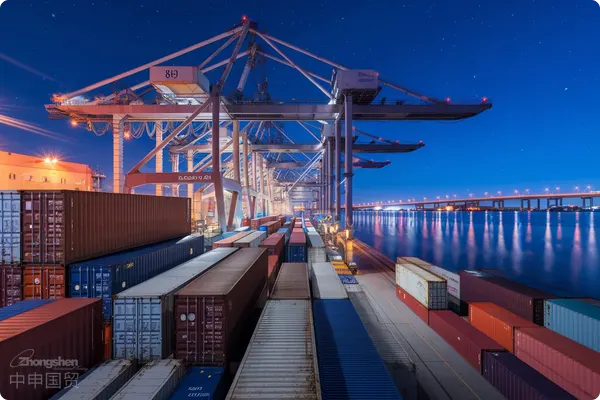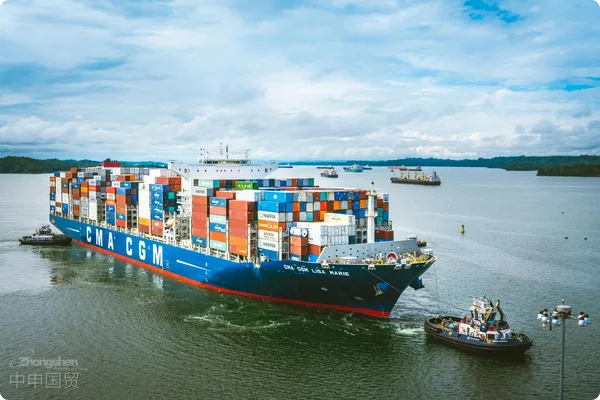- Shanghai Zhongshen International Trade Co., Ltd. - Two decades of trade agency expertise.
- Service Hotline: 139 1787 2118
As preliminary results of the 2024 U.S. presidential election became clear, Republican candidate and former President Donald Trump won with 312 electoral votes, drawing widespread attention from global markets. Trumps proposed tariff policies during the campaign, particularly a 10% to 20% tariff on all U.S. imports and up to 60% high tariffs on Chinese goods, became market focal points. S&P Global Ratings, Federal Reserve officials, and major industry analysts have all weighed in on the potential far-reaching impacts of these policies on the U.S. and other economies.

Core Content and Implementation Possibility of Tariff Policies
Trumps proposed tariff policies during the campaign aimed to protect domestic industries and reduce trade deficits by increasing tariffs on imported goods. However, S&P Global Ratings noted in its latest report that this proposal might not be fully implemented but could serve as a starting point for ambitious demands in trade negotiations post-election. S&P Global estimates that even if tariffs fall short of Trumps promised 10% to 20%, a general 10% tariff on core imports could raise the U.S. Consumer Price Index (CPI) by up to 1.8 percentage points annually, further fueling inflation.
Impact on Inflation and Consumer Purchasing Power
Neel Kashkari, President of the Federal Reserve Bank of Minneapolis, stated that if tariff policies become long-term measures, they would have more complex effects on inflation. One-time tariff adjustments might only cause short-term price increases, but retaliatory tariffs from other countries could escalate global trade tensions, posing greater threats to inflation and economic stability. S&P Globals report added that these tariffs might reignite inflation in Trumps first year, though the impact is expected to be one-time without long-term inflationary pressure.
Potential Drag on U.S. GDP and Exports
S&P Global Ratings noted that considering the loss to U.S. household income and the blow to U.S. exporters, real GDP could be dragged down by up to 1 percentage point. A 60% tariff on Chinese goods alone might raise U.S. inflation by 1.2 percentage points and drag GDP down by around 0.5 percentage points. This would not only increase business costs but also weaken consumer purchasing power, further dampening economic growth.
Affected Industries in Europe and Southeast Asia
According to credit rating agency Morningstar DBRS, Europes pharmaceutical, automotive, and chemical industries could be the hardest hit, as these sectors account for the majority of Europes exports to the U.S. Shares of European automakers like Tesla, Mercedes-Benz, BMW, and Volkswagen fell by 4% to 7% after Trumps victory. Analysts suggest international manufacturers might set up local production in the U.S. to counter potential trade protectionism.
Airbus CEO stated during the Q3 earnings call that the company has experience handling U.S.-EU trade wars and would pass tariff costs to U.S. customers, ultimately borne by U.S. airlines. This indicates Europes aviation industry is preparing for potential tariff hikes by shifting financial pressure through cost pass-through.
Southeast Asian nations, as export-oriented economies, heavily rely on the U.S. as a key export market. Data from Singapores non-profit Hinrich Foundation shows ASEAN countries trade accounts for an average of 90% of GDP—double the global average. Vietnam, with a large trade surplus with the U.S. ($90 billion from January to September), faces new uncertainties under Trumps tariffs, potentially affecting its economic growth and export performance.
Global Economic Chain Reactions
The IMF previously warned that large-scale tariffs could shrink global GDP by 2% and trade volume by 6% within five years—equivalent to the combined economies of France and Germany—posing severe threats to global recovery. Export-dependent countries and globally integrated supply chains would face higher costs and market volatility.
Market and Corporate Response Strategies
Businesses and market participants must adopt diversified strategies to counter Trumps tariffs. Many manufacturers may expand U.S. production to avoid higher costs, while enhancing supply chain flexibility and seeking alternative markets to reduce dependency on single markets.
Policymakers Considerations and Recommendations
Economists urge the U.S. to balance short-term protectionism with long-term stability. While high tariffs can shield domestic industries, excessive rates may distort prices, reduce consumer welfare, and trigger trade conflicts, ultimately harming U.S. interests. S&P Global recommends strengthening multilateral trade agreements and international cooperation to resolve disputes and promote fair, open trade.
Related Recommendations
? 2025. All Rights Reserved. Shanghai ICP No. 2023007705-2  PSB Record: Shanghai No.31011502009912
PSB Record: Shanghai No.31011502009912










